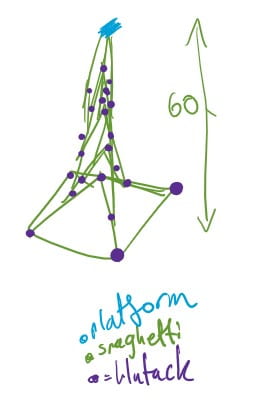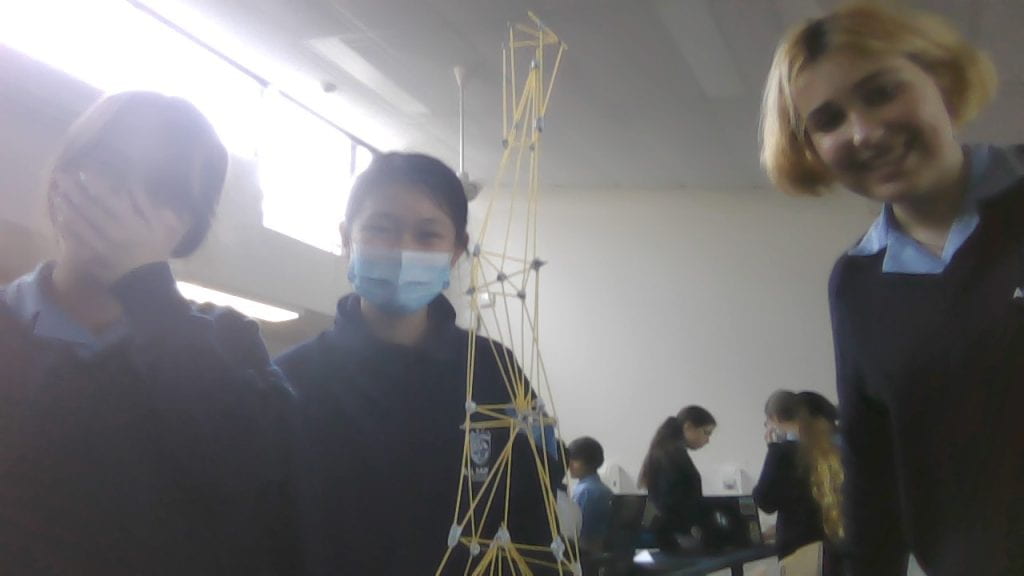Year 9 Science Engineering Project
In this term, year 9 students were given a task to create a building model in groups that will be able to withstand an earthquake. We created this using spaghetti and blu tack with a budget of $60, (A string of spaghetti and a gram of blu tack costs $1 each.) The model would have to be within the height requirements of 60cm tall, and the model would have to be able to withstand 10 seconds of a makeshift earthquake.
Before creating the building model and officially starting the project, our group had to do a 50-minute design sprint. In this design sprint, the group was to create a building model out of spaghetti and blu tack without research within 50 minutes, and the model will be tested. This was hard for our group to do as there was only one member there on the day and they had to do the 50-minute design sprint by themselves. The model the member did was like a pyramid, it survived the earthquake test but was under the measurement requirements, didn’t have room for a platform at the top of the model, and broke apart after the testing. We then had to reflect on the 50-minute sprint and look for ways to improve and how to improve.
Afterwards, it was time to start the project. We started by giving each member of the group a role in the project and then setting clear rules. The project was split up into 6 phases, the first phase being “define.” Here we had to think about “What are we hoping to build?” and “Why is it important?”. The answer was written in Stile.
The second phase of this project was “Research.” In this phase, we had to gather data and search for information on how other engineers dealt with the problem. In our group, we searched for images of other models made out of spaghetti and blue tack that will be able to withstand earthquakes. We found a model that was similar to the one our member made during the 50-minute sprint. We liked the idea of mainly using triangles and pyramids in the model. We believe that triangles and pyramids are strong and sturdy shapes.

The third phase of this project was “Design.” In this phase, we had to create/draw out a design of our model considering everything that was researched. One of our member’s roles was to draw the design of the prototype, so they were in charge of drawing it (keeping the researched model in mind with some modifications) and everyone in the group made sure that they were happy with the design.

The next part of the phase was to calculate how much money our materials would cost and how much of the materials we would be purchasing. We decided to buy 45 pieces of spaghetti and less than $15 worth of blu tack. We made sure to have some money left over in case we would need to buy more resources. (We ended up using all the money and the extra money for blu tack, our total spending was $60).
The fourth phase of this project was “Create.” In this phase, we had to buy our materials and put our model together considering our design. It took our group one lesson to finish our model.

We made sure to be consistent with our idea of lots of pyramids and triangles for a strong structure. Our original plan was to make a model of pyramids on top of pyramids but we ended up making one tall and big pyramid with pyramids and triangles inside it and on the faces of the pyramid for support. Our model met the measurement requirements but still did not have the platform.
The fifth and final phase of the project was “Test.” In this phase, our teacher Mr Goor had a table ready with equipment that he could use to shake and move the bench mat that our model was on. Our model survived the test. I am unable to attack the video of our model going through the test here. While watching our model go through the test, we found that the strongest part of our model was the base as the base stayed still and the rest of the model moved around the base. A few spaghetti sticks fell off of the model but our model remained standing the whole test.